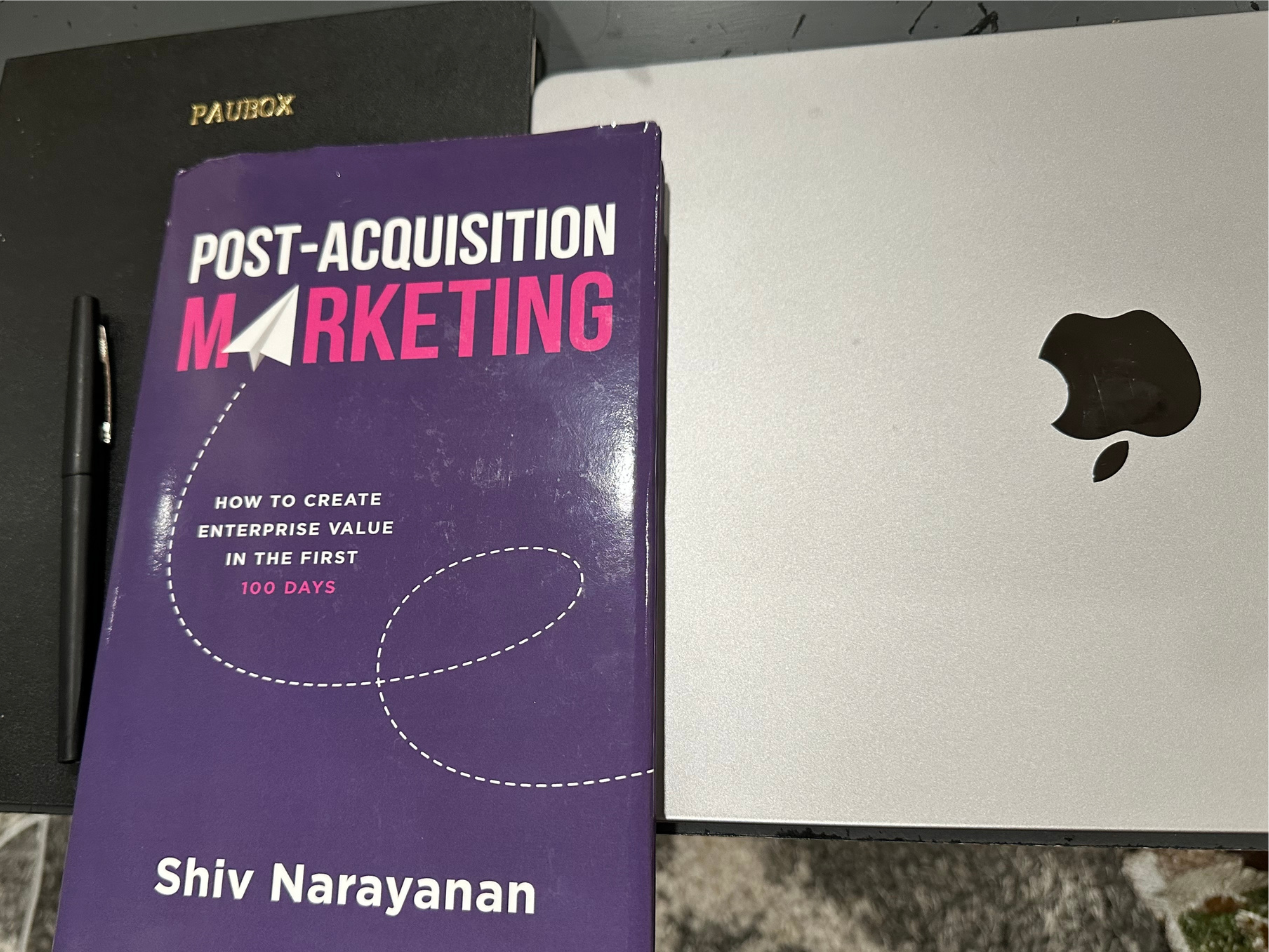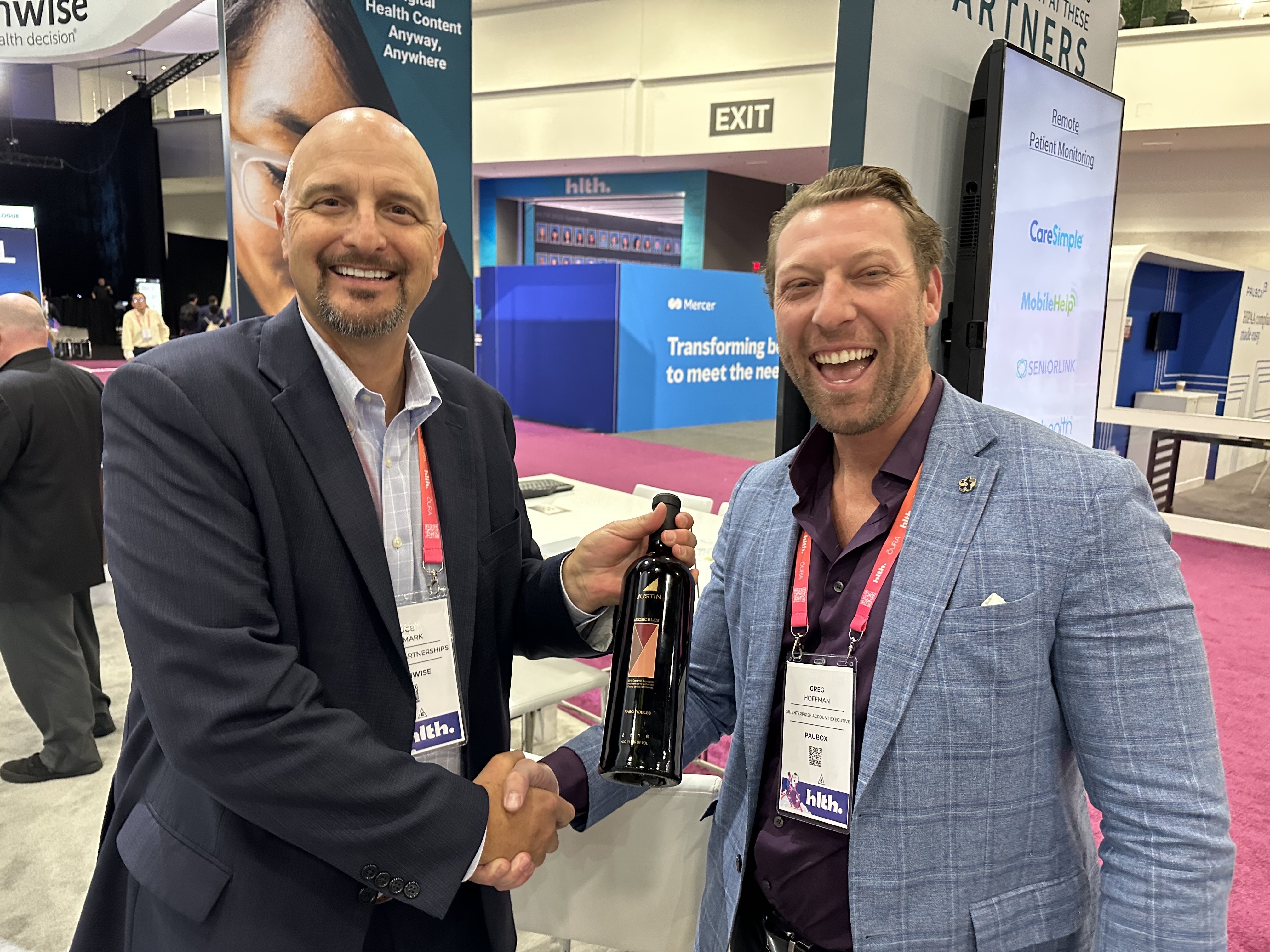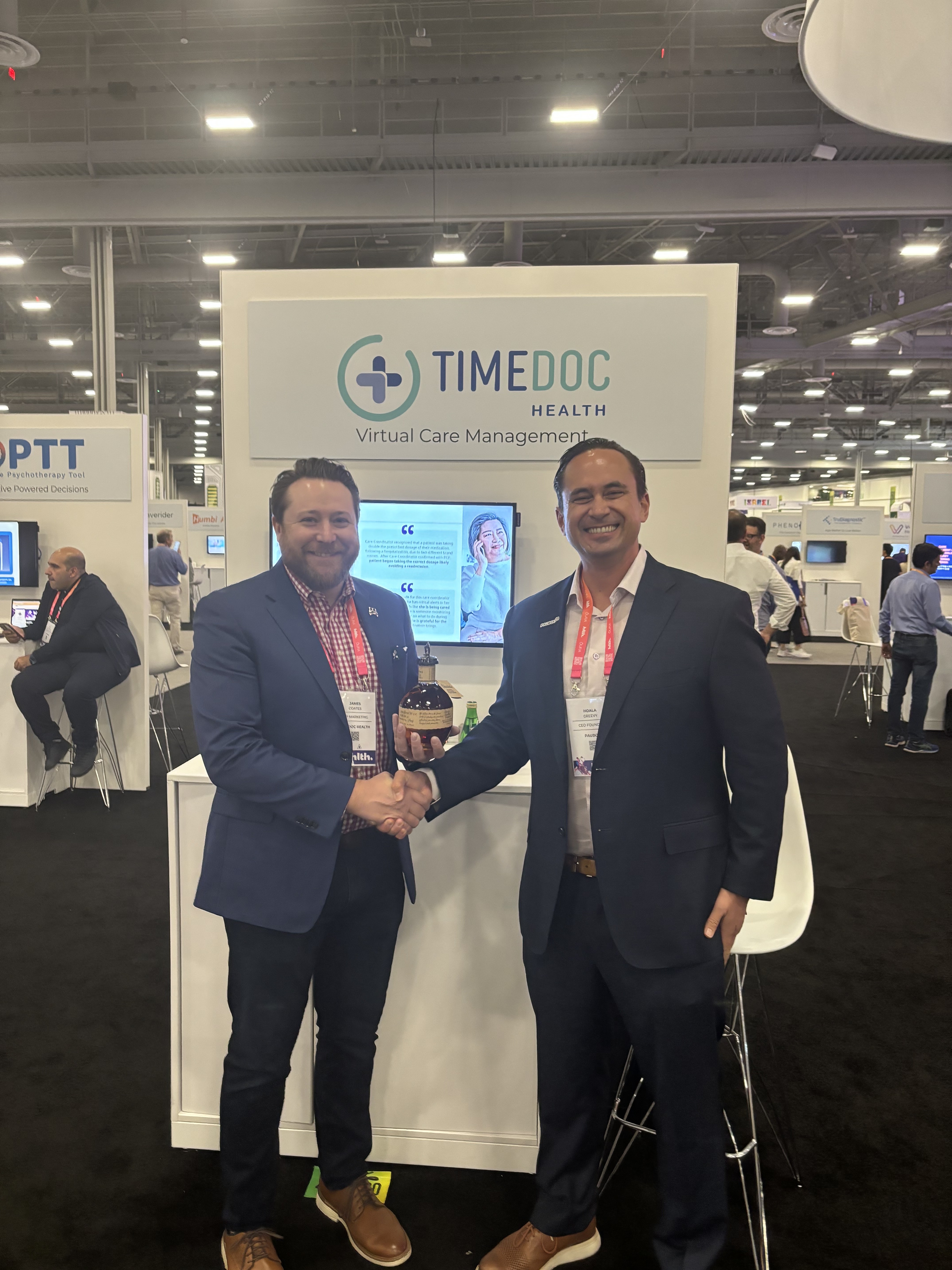5 min read
Post-Acquisition Marketing by Shiv Narayanan: My Takeaways
 Hoala Greevy
November 08, 2023
Hoala Greevy
November 08, 2023

- I recently read Post-Acquisition Marketing: How to Create Enterprise Value in the First 100 Days by Shiv Narayanan.
- As a thought experiment, I read the book to learn marketing tactics a private equity company would employ in a SaaS business. In other words, if there's something to learn from PE, why not do it ourselves now?
- Here are my takeaways, coupled with recent pictures of our journey to become the market leader for HIPAA compliant communication.
Introduction

Here are my takeaways from Introduction:
- "With ambitious expectations, scaling Marketing becomes a pivotal growth lever."
- "The ultimate objective (of private equity) is to create enterprise value and increase the overall valuation of the business."
- According to Salesforce's State of Sales report, 57% of Account Executives miss quota
- "For a company with aspirations of growing 30% year over year organically, allocating only 4% of revenue toward Marketing is a recipe for disaster."
- "Private equity investors expect Marketing to take on greater responsibility for revenue and bring data to guide decisions to help the company reach its expectations."
- "In other words, data is private equity's native language, and Marketing needs to speak it."
- PE considers the following growth levers when acquiring a SaaS business:
- Scaling new bookings
- Acquiring and integrating additional companies
- Capturing white space opportunity
- Increasing prices
- Introducing additional products or supply chain steps
- Entering new markets
- The focus of this book is on scaling new bookings.
- The book outlines a 5-step framework to scale Marketing and create more enterprise value in the first 100 days after an acquisition.
Chapter 1. Marketing Due Diligence

Here are my takeaways from Chapter 1: Marketing Due Diligence:
- Every marketing activity produces a different kind of lead.
- When it comes to establishing the right accountability metrics to judge the success of a Marketing department:
- Marketing-Generated Pipeline
- Closed Won Deals
- Marketing-Generated Pipeline removes the Marketing team's bias for lead volume and replaces it with lead quality. For example, if a sales team has an initial qualification call with a prospect and it's deemed a bad fit (for any reason), it's removed from the pipeline generated by Marketing. In other words, that lead did not make it to the Marketing-Generated Pipeline stage.
- Acceptable Cost per Lead: The amount you can spend on each lead and remain profitable, based on how likely that lead is to close.
- By using a 12-month payback period, you can use that metric and the average contract value (ACV) to calculate ACpL.
- Each Marketing activity will have its own ACpL metric.
- Pareto Principle for Marketers: 80% of revenue from a channel comes from 20% of the campaigns. The trick is finding that 20%.
Chapter 2. Demand Generation

Here are my takeaways from Chapter 2: Demand Generation:
- Unlimited marketing budget: A framework to think through the problem of how to scale Marketing.
- "The truth is there is always more budget to go around. You just have to prove the ROI."
- "The best place to start in mapping all your marketing opportunities with an unlimited budget is to map your ideal customer's journey from their perspective."
- "Demand generation is less about convincing people to buy and more about meeting people where they are on their buyer journey."
- The buyer journey is usually:
- Unaware. Lack of awareness there is a problem
- Awareness. Problem awareness
- Knowledge. Deeper and more thorough knowledge of potential solutions
- Consideration. Finally, consideration for a specific solution to purchase.
- "As soon as you understand this concept, everything becomes about building content, assets, campaigns, and programs to meet prospects and buyers where they are on their journey."
- Each prospect you meet has both an intent level and an interest level. This is vital to understand. "If you build a framework for demand gen using only one of these dimensions, expensive mistakes will be made."
- "Each marketing action directly relates to a customer need as well as their level of interest and intent."
- In essence, build a 3x3 matrix where the upper right quadrant is high intent + hot interest and the lower right quadrant is low intent + cold interest.
- When generating demand gen assets, work from right to left and top to bottom in the aforementioned 3x3 matrix.
- "Each time an additional asset is created, more enterprise value is added to the business because more of the best prospects are being found, nurtured, and converted into real sales opportunities."
- Prioritizing opportunity versus investment required: "While order matters and working backward is critical, mapping opportunity versus investment tells us where we should really focus our initial demand gen energies."
- "The key to success is balancing working backwards through both the customer journey and the opportunity versus effort framework."
- Speed to outcomes is the best way to get additional budget
- "The next gear involves helping prospects who are unaware discover that the market exists."
- "From an opportunity versus investment standpoint, these are the most expensive prospects to convert, and going after them before you max out all all the other quadrants is not wise. However, when you get to a point where you are capturing all the possible value from each stage and channel, this quadrant has the greatest amount of opportunity."
Chapter 3. Content

Here are my takeaways from Chapter 3: Content:
- "Usually, when running through channel and campaign analysis, the right thing to do is stop investing in places where the Acceptable Cost per MQL is too high..."
- Content can be used to support the entire customer journey. "It plays a key part in how your customers move from Awareness to Activation to Adoption through to Advocacy."
- Content usually understaffed and underfunded.
- When it comes to content, don't confuser productivity with value creation.
- Think intently on building a system that's always working on the most valuable piece of content for the company.
- A content roadmap is critical to have as a prioritization mechanism:
- Step 1. Take an inventory of all existing content. The goal here is to understand biggest gaps in content.
- Step 2. Based on ROI, prioritize biggest opportunity areas. "If you're not getting enough leads to keep. your sales team busy, prioritize top-of-funnel content, such as SEO content and email-capture assets."
- Step 3. Prioritize content roadmap items across product lines. Which product line has the most value to the business?
Chapter 4. Team

Here are my takeaways from Chapter 4: Team:
- Each marketing department in SaaS needs the following eight functions:
- Corporate. Brand, communications, and PR.
- Events. In-person and virtual events. Requires lots of coordination.
- Product Marketing. Interfacing with product teams to understand key benefits of features, then communicating them to customers and prospects.
- Customer Marketing. Building campaigns to cross-sell and upsell existing customers.
- Sales Enablement. Supporting sales team with collateral, thought leadership, and content to help win more deals.
- Content Marketing. Creating assets necessary to support the customer journey from awareness nurture content, consideration, and beyond.
- Demand Generation. Building programs and campaigns on digital and offline channels to drive pipeline.
- Marketing Operations. Aligning the department with data to understand ROI on marketing spend so Marketing can scale faster.
- Budget does not need to be equally distributed between the eight functions.
- No company will be a leader in all eight areas of marketing, nor is it necessary to be superb at everything.
- "Figuring out the specific needs of a particular marketing organization starts with self-awareness. Where is the overall organization on its journey and what does it need from Marketing at this current stage?"
- The four key stages of scaling marketing organizations:
- Stage 1: Startup. Usually a marketing team of one to three people in company doing less than $5M in annual recurring revenue (ARR).
- Stage 2: Finding Scale. Marketing teams that are transitioning into becoming revenue generators and have one or two senior managers leading a team of seven or eight people. Companies at this stage are usually doing $5 - $15M ARR.
- Stage 3: Growth. At this stage, the Marketing department has figured out channels and campaigns that drive revenue and are focused on scaling. The marketing team at this point is usually more than 15 employees, with the company generating at least $20M - $50M ARR. "This is the stage of high-performing marketing teams, and it has largely been the focus of this book to help your company reach it."
-
- Stage 4: Multiproduct, Multinational. Companies at this stage are normally doing $100M ARR or more, with the marketing team's staff being 25+ people, spread across multiple product lines. The complexity level at this stage is high.
- "If you grow faster than the people side of your organization can handle, the likely outcome is failure to meet expectations."
- A high-velocity, low ACV SaaS company needs inbound marketers to create content and run demand gen programs.
Chapter 5. Investment Committee

Here are my takeaways from Chapter 5: Investment Committee:
- "To go from founding a company to anything north of $10 million is an incredible achievement." (Agreed)
- Do not treat a marketing budget like a math exercise. It is strategic and requires underlying data.
- A Board of Directors is always willing to fund opportunities that generate ROI.
- "The likelihood of getting an increased amount of budget approved drastically increases if Marketing can do two things: first, tie its budget ask to what has already been forecasted to revenue. And second, show where that investment will pay off."
- Marketing needs more data to understand and scale it impact on revenue.
- "To succeed, Marketing needs to come prepared with the right data to every board meeting. There needs to be a disciplined cadence inside companies to follow this framework on at least an annual basis, and ideally quarterly... This framework, if followed religiously, compounds over time."
Subscribe to Paubox Weekly
Every Friday we'll bring you the most important news from Paubox. Our aim is to make you smarter, faster.




